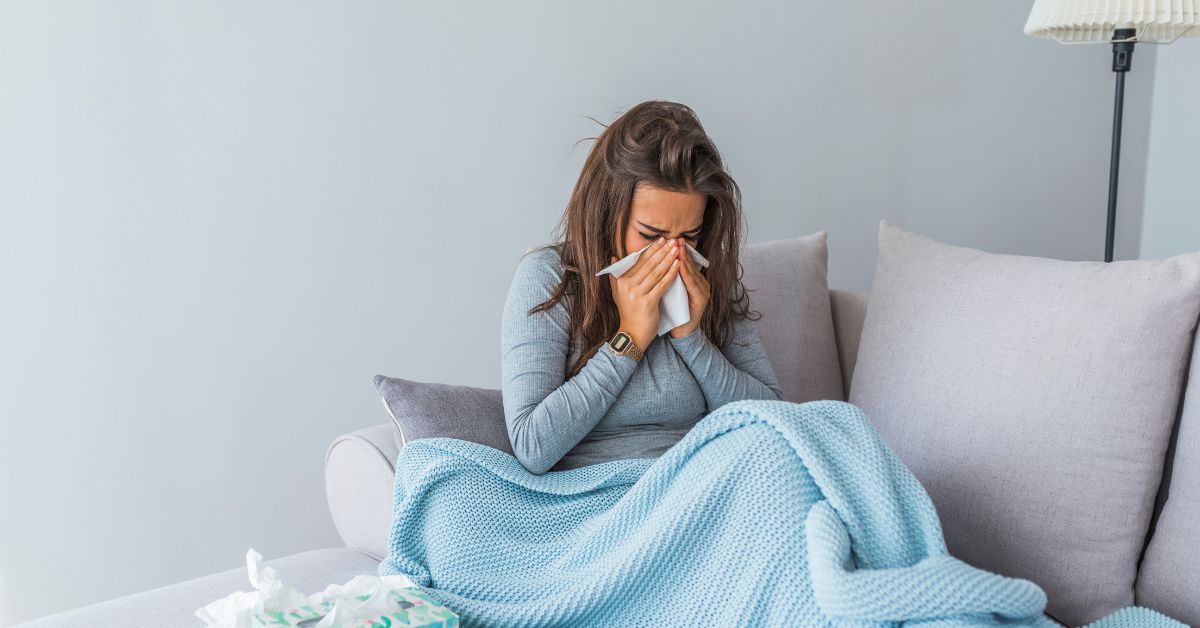During the dark days of winter, many people develop signs of depression. This specific type of depression is known as seasonal affective disorder (SAD), a condition that affects millions and goes beyond just feeling down due to cold weather.
“Seasonal Affective Disorder (SAD) is more than just the ‘winter blues’ – it’s a subtype of depression that includes persistent sadness, fatigue and changes in appetite or sleep patterns,” Nancy Schmelzer, MSW, MSN, LISW-S, PMHNP-BC, a behavioral health nurse practitioner in our Springfield market, says.
Symptoms of seasonal affective disorder
These symptoms can appear gradually or suddenly and may be mild or severe. They include:
- Fatigue or low energy
- Oversleeping or other changes in sleeping habits
- Appetite changes, particularly craving foods high in carbohydrates
- Weight gain
- Loss of interest in hobbies or activities
- Feelings of hopelessness or worthlessness
Up to 80 percent of people with seasonal affective disorder are women, and most of them are in their mid-20s to mid-30s.
“Women are four times more likely to experience SAD than men,” Nancy explains. “Fluctuations in estrogen levels may influence serotonin, the brain’s ‘feel-good’ hormone.”
People who work long hours inside buildings with few windows may also be more prone to developing this disorder.
“Additionally, living further from the equator can increase the risk of SAD, due to reduced exposure to natural sunlight during fall and winter,” Nancy adds.
These symptoms are significant and can affect an individual’s family, social and work life.
How to treat seasonal affective disorder
While SAD symptoms usually improve with the arrival of spring, there’s no need to wait months to start feeling better.
Several effective treatment options are available, including:
- Light therapy: Also known as phototherapy, light therapy can elevate mood and help the body’s circadian rhythm adjust. People using light therapy typically sit about two feet from a lightbox after waking up for about 30 minutes. However, because lightboxes are not FDA-regulated, consulting a physician before starting is recommended.
- Medication: Since SAD is a form of depression, antidepressants can help regulate the chemical imbalance it creates. The FDA has approved extended-release bupropion to help prevent SAD episodes when taken daily from fall through early spring. If you’re considering medication, consult your doctor about options that may work best for you. “The FDA has approved extended-release bupropion to help prevent SAD episodes when taken daily from fall through early spring,” Nancy shares.
- Cognitive Behavioral Therapy (CBT): Studies show that CBT helps individuals change negative thought patterns and behaviors associated with SAD. Unlike medication, CBT provides long-term benefits by teaching coping strategies that last beyond the winter months.
If you are unsure of where to start, Nancy suggests trying counseling first.
“Studies have shown that the long-term benefits of counseling last longer over time, but you may experience more immediate relief with medications and light therapy,” she says.
For additional guidance, consider asking your provider:
- What treatment is best for me?
- How can I prevent depressive episodes?
- Will light therapy work?
- Should I take an antidepressant?
- When should I start treatment?
- How long should my treatment continue?
- What else can I do to feel better?
Lifestyle changes to manage SAD
“Preventative steps, like maintaining a consistent sleep schedule, exercising outdoors and eating a balanced diet can help reduce SAD symptoms before they start,” Nancy explains.
If you’re suffering from SAD symptoms, try incorporating the following actions into your daily routine:
- Daily walks: Even on cold days, exposure to natural sunlight can help regulate mood. Spending 20 to 30 minutes outdoors in the morning can make a significant difference.
- Consistent sleep schedule: SAD can lead to both excessive sleeping and insomnia. Keeping a regular bedtime and wake-up time helps regulate your body’s internal clock.
- Staying active: Keeping your mind and body engaged can counteract the lethargy that often accompanies SAD. Consider taking up a new hobby or setting small weekly goals.
- Healthy diet: People with SAD often crave carbohydrates, which can lead to increased fatigue. Maintaining a balanced diet with seasonal produce like squash and citrus fruits can help stabilize energy levels.
Supporting a loved one with SAD
If you have a friend or family member experiencing SAD, your support can make a big impact.
“People with SAD tend to isolate themselves,” Nancy explains. “Reaching out with calls, texts or inviting them for a walk can make a difference.”
Small gestures, such as checking in regularly or inviting them to spend time together, can provide comfort and reassurance.
“Encourage, don’t shame – gentle support and understanding go a long way in helping someone with SAD,” Nancy adds.
When to seek professional help
If your SAD symptoms are significantly impacting your daily life, consult a primary care provider. And if you are experiencing suicidal thoughts, seek help immediately by calling the national suicide prevention lifeline at 1-800-273-8255 or visiting the nearest emergency room.
By recognizing the signs of SAD and taking proactive steps, individuals can better manage their symptoms and improve their overall well-being during the winter months.
Learn about the primary care services we provide at Mercy Health.






